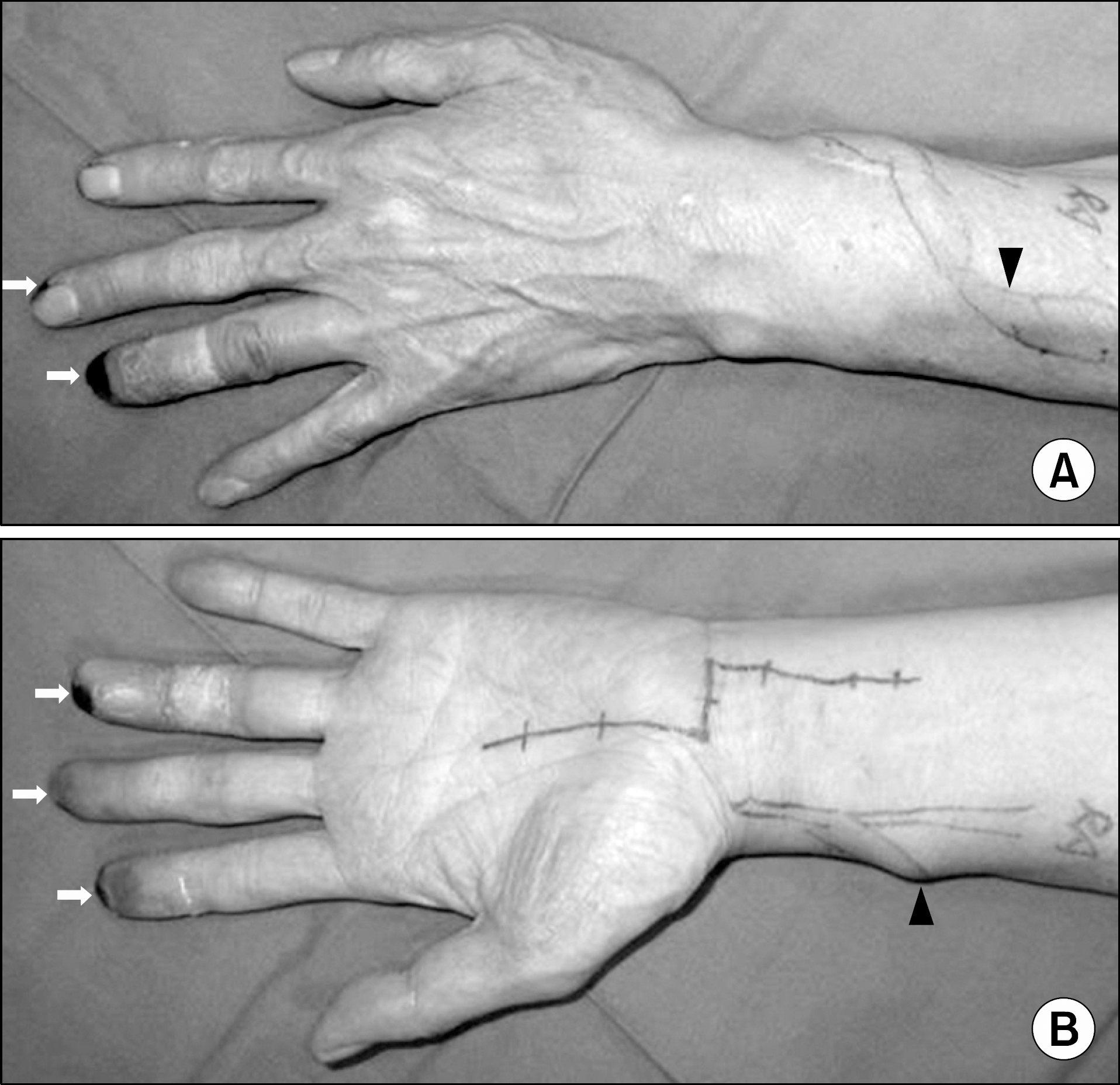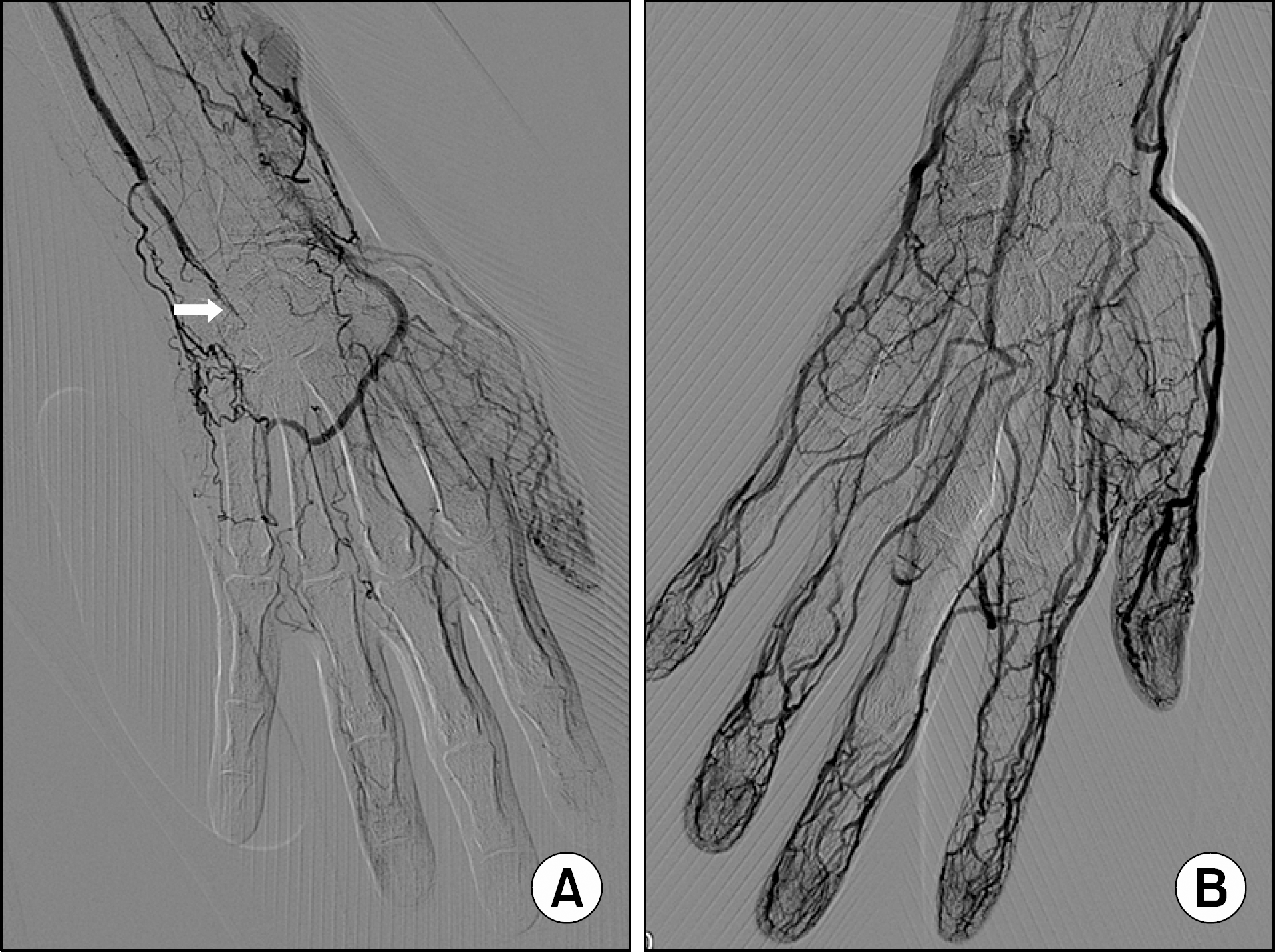Abstract
Ischemic steal syndrome (ISS) is one of the serious complications that can occur after construction of an arteriovenous fistula (AVF) for hemodialysis (HD). Because AVF-related ISS symptoms are usually aggravated during HD sessions, a few cases of ISS in kidney transplantation (KT) recipients have been reported in the literature. We describe a 63-year-old male with diabetic nephropathy who created AVF for maintenance HD and presented with pain at rest and tissue necrosis of the left distal fingers at 10 years post-KT. Brachial angiography revealed the presence of attenuated blood flow through the distal ulnar artery. He underwent finger amputation and AVF ligation, leading to complete relief of ischemic symptoms. The aim of this case report is to help clinicians to diagnosis a steal syndrome in kidney transplantation with a careless AVF for a long period of time.
Go to : 
REFERENCES
1). Rocha A, Silva F, Queirós J, Malheiro J, Cabrita A. Predictors of steal syndrome in hemodialysis patients. Hemodial Int. 2012; 16:539–44.

2). Zamani P, Kaufman J, Kinlay S. Ischemic steal syndrome following arm arteriovenous fistula for hemodialysis. Vasc Med. 2009; 14:371–6.

3). Kim NH. Management of complications in vascular access. Korean J Nephrol. 2006; 25(Suppl 2):530–9. (김남호. 혈관통로 합병증 치료와 관리. 대한신장학회지 2006;25 Suppl 2:530-9.).
5). Unger P, Wissing KM. Arteriovenous fistula after renal transplantation: utility, futility or threat? Nephrol Dial Transplant. 2006; 21:254–7.

6). Vajdič B, Arnol M, Ponikvar R, Kandus A, Buturović- Ponikvar J. Functional status of hemodialysis arteriovenous fistula in kidney transplant recipients as a pre-dictor of allograft function and survival. Transplant Proc. 2010; 42:4006–9.

7). Mickley V. Steal syndrome: strategies to preserve vascular access and extremity. Nephrol Dial Transplant. 2008; 23:19–24.

8). Tordoir JH, Dammers R, van der Sande FM. Upper extremity ischemia and hemodialysis vascular access. Eur J Vasc Endovasc Surg. 2004; 27:1–5.

Go to : 
 | Fig. 1.Dry gangrene (arrows) of the second, third, and fourth digits of the left hand before fistula ligation. At the site of fore-arm, patent arteriovenous fistula (arrowheads) is seen. (A) Dorsal and (B) palmar aspects of left hand. |
 | Fig. 2.Brachial angiography showing (A) diversion of blood to the arteriovenous fistula with attenuated distal vessels, occlu-sion of distal ulnar artery (arrow). And, diminished blood flow to digital hand. (B) Follow-up the angiography showing normal blood flow to digital hand when compression of vein involved in a fistula. |




 PDF
PDF ePub
ePub Citation
Citation Print
Print


 XML Download
XML Download